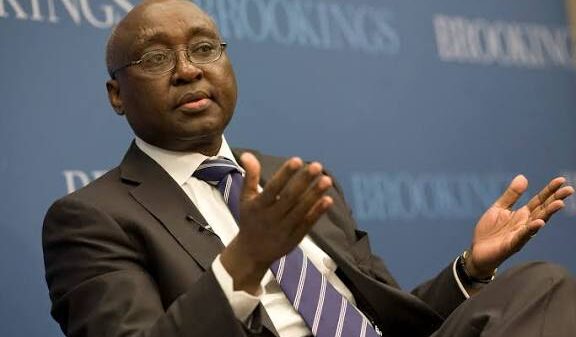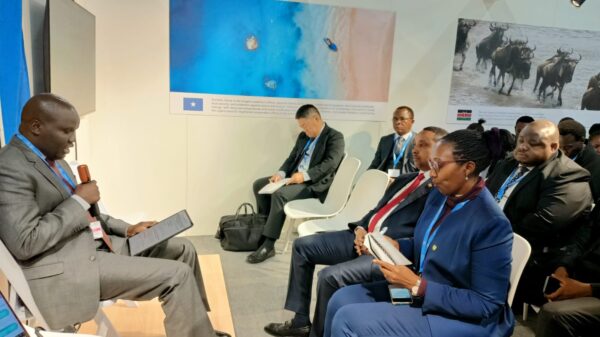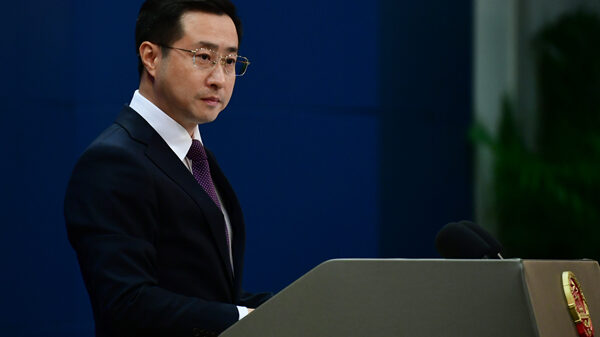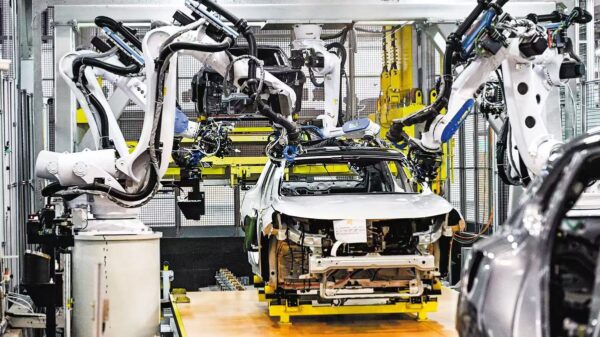BEIJING, China, Nov 11 — China’s sharpened focus on cultivating strategic emerging industries during the 15th Five-Year Plan (2026-30) period will give fresh vitality to nurturing new quality productive forces and help the country better navigate external uncertainties while maintaining its edge amid global competition, said officials, experts and company executives.
Their comments came as China plans to make more efforts to accelerate the development of emerging sectors such as new energy, new materials, aerospace and the low-altitude economy during the 15th Five-Year Plan period, according to the recently unveiled Recommendations of the Central Committee of the Communist Party of China for Formulating the 15th Five-Year Plan for National Economic and Social Development.
President Xi Jinping said the recommendations were initiated in line with the country’s strategic development goals, recognizing the pivotal role of the next five years, and based on an in-depth analysis of both the domestic and global landscapes.
Xi, who is also general secretary of the CPC Central Committee, said, “It is important that we seize this window of opportunity to consolidate and build on our strengths, remove development bottlenecks, shore up areas of weakness, seize the strategic initiative amid intense international competition, and secure major breakthroughs in strategic tasks of overall importance to Chinese modernization.”
The remarks were made in Xi’s explanatory speech on the recommendations for formulating the 15th Five-Year Plan, delivered at the fourth plenary session of the 20th CPC Central Committee, which concluded in Beijing in late October.
Yao Jun, head of the department of planning at the Ministry of Industry and Information Technology, said that “President Xi’s speech is grounded in reality and forward-looking, and it has pointed the way forward for us in all our endeavors”.
According to Yao, the achievements during the 14th Five-Year Plan (2021-25) period have laid a solid foundation, and the strategic tasks proposed going forward are comprehensive and well-focused.
Yao said, “We will anchor our work on developing new quality productive forces, driven by the deep integration of technological and industrial innovation.”
He added that the focus will be on intelligent, green and integrated development, moving manufacturing from scale expansion to value creation.
Zhu Min, former deputy managing director of the International Monetary Fund, said the distinctive strength of China’s economy lies in its strong real economy and industrial system.
“As China’s technological capabilities continue to grow, the key challenge — and opportunity — is to effectively integrate these advancements to cultivate new industries driven by new quality productive forces. That’s central to China’s future economic trajectory,” he said.
Zhu also said such a trend is already mirrored in China’s emphasis on strategic emerging industries such as new energy and the low-altitude economy. These sectors are poised for significant growth, built upon the robust momentum of China’s “three new” economies — new industries, new business forms and new models — which already contributed over 18 percent to the country’s GDP as of 2024, according to the National Development and Reform Commission.
Zhu Keli, founding dean of the China Institute of New Economy, said, “China’s goal of nurturing these frontier sectors not only reflects confidence in our own industrial capabilities but, more critically, serves as a key measure to seize the initiative in global sci-tech industrial competition.”
China has been the world’s largest manufacturing country in terms of output for 15 consecutive years, and it ranks first globally in the output of over 220 industrial products, according to the Ministry of Industry and Information Technology.
“Boasting such a complete industrial system, China provides rich application scenarios and enormous market potential for technological innovation, as well as solid support for the development of new industries,” Zhu added.
According to Zhu, emerging pillar industries, represented by the low-altitude economy, are now capable of driving growth momentum and are transitioning from “isolated breakthroughs” to “industrial-chain-wide expansion”.
Tian Gangyin, founder, chairman and president of the Chinese unmanned aerial vehicle developer United Aircraft, said the blueprint mapped out for the 15th Five-Year Plan period is “inspiring and motivating”.
Industrial-level drones are finding applications in a wide range of fields, such as emergency rescue work, power line patrolling, farming, and surveillance and security operations, he added.
Aerospace is another strategic industry that China values, and in which companies are moving fast. Hainan International Commercial Aerospace Launch Co, for instance, plans to double its number of launch pads from two to four, and push forward rocket-recovery technology, marking a major step in the country’s bid to build a globally competitive commercial space hub in Wenchang, Hainan province.
Yang Tianliang, chairman of the company, said: “By end-2026, we will have launch pads No 3 and No 4, along with a new technical area and telemetry station. Once completed, the facility will be able to handle more than 60 launches annually, with each pad supporting launch missions every 10 days, or even weekly.”
Meanwhile, China is making progress in the new energy industry, such as in nuclear energy.
Wei Zhigang, chairman of Hainan Nuclear Power Co, said artificial intelligence computing fuels an exponential surge in demand for electricity, and it is increasingly difficult for the traditional energy supply to meet such a huge demand.
“Secure, affordable and low-carbon energy has become a key factor driving the high-quality development of the intelligent computing industry,” Wei said.
For more visit China Daily
For subscriptions on news from China Daily, or inquiries, please contact China Daily Africa Ltd on +254 20 6920900 or write to enquiries@chinadailyafrica.com















































